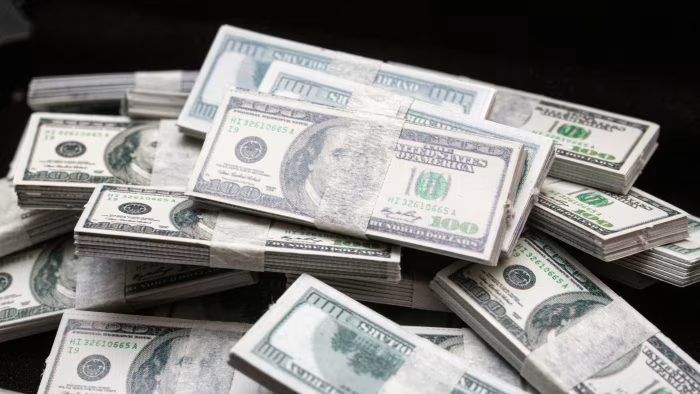Billions of dollars are flowing into US exchange traded funds designed primarily as tax-minimising vehicles, in a move that is drawing criticism from politicians and which some in the industry believe could attract the attention of tax authorities.
A number of fund firms have been creating ETFs that either lower the interest or dividend income that can be taxed, or alternatively reduce capital gains tax on investors’ pre-existing stock portfolios.
The latter type is proving the most contentious. Known as section 351 or ETF swap funds, they are designed specifically to help investors with large portfolios who would face a significant tax bill if they sold holdings that had risen in value. At least seven such funds managing $2.2bn have launched this year, with four more currently being seeded.
“Everybody is looking at this creatively, which is great, but it then also makes you wonder sometimes how far is too far,” said Brittany Christensen, head of business development at Tidal Financial Group, which manages $50bn of assets and has several 351 funds among its near-300 ETFs.
Some US politicians are already opposing these funds. In June, Ron Wyden, the top Democrat on the Senate finance committee, put forward legislation that would prevent tax-free transfers of appreciated securities to 351 funds.
Jeffrey Colon, professor of law at Fordham University School of Law, said that, unless Congress acts, tax paid by publicly traded investment vehicles would “inevitably” decline.
“The Wyden proposal is a necessary and appropriate first step in reining in the newest tax abuse of ETFs,” he said. “The growing popularity of ETFs and recent launches of ETF swap funds requires a new urgency.”
“The government is clearly aware of these issues, but so far has not indicated any inclination to attack them. The investment company lobby is very powerful,” he added.
ETFs have always been more tax efficient than more traditional mutual funds in the US, due to a quirk in the tax system. Whereas mutual funds often trigger a capital gains tax event when they sell profitable positions, ETFs can usually avoid doing so by trading “in kind” with market makers, so that no cash changes hands.
Three decades on from the birth of ETFs, though, some issuers are looking to turbocharge this tax efficiency. The less contentious funds minimise coupon or dividend income — subject to income tax — by switching holdings shortly before payments fall due.
In August Washington DC-based F/m Investments launched the F/m Compoundr High Yield Bond ETF and F/m Compoundr US Aggregate Bond ETF. The two funds invest in bond ETFs but then rotate into other ETFs just before each underlying fund’s ex-dividend date, “converting monthly interest income into unrealised capital gains”, according to the firm. This strategy also minimises withholding taxes for non-US investors.
Roundhill Investments and LionShares have launched similar funds that invest in equity funds.
While the extent to which investors will take advantage of these tax loopholes remains to be seen, some funds are already delivering savings.
The Alpha Architect 1-3 Month Box ETF, known as BOXX, which invests in options to mimic an ultra-short duration bond portfolio, has had net flows of $8.6bn since launch and now holds $9bn of assets, implying it has made a total return of $400mn. Assuming investors would have paid the highest rate of interest income tax but instead pay the long-term capital gains tax rate of 20 per cent, this would translate into a tax saving of $68mn, according to Financial Times calculations.
“This is a significant trend because taxes are often top of mind for investors and ETFs have found ways to manage tax exposures,” said Bryan Armour, director of passive strategies research in North America at Morningstar.
Section 351 funds — named after a previously little-used section in the US Internal Revenue Code — are seen by some as upping the ante still further. Contributing their pre-existing shareholdings allows wealthy investors to convert them into shares in an ETF, without triggering a capital gain.
Tidal’s Christensen said the Internal Revenue Service might have some concerns over people contributing stock they received as part of an employee share plan. That is particularly the case if they are slicing this stock up into several 351 conversions in order to ensure they contribute a diversified portfolio, which is required under US tax rules, to each ETF.
“At what point does the IRS start to look into this and say we are giving this to people who have had a compensation equity plan?” she said. “This is a new use case for section 351. It makes you wonder if it started to raise some red flags.”
Fund firm Exchange Traded Concepts has conducted a number of such launches, with “several billion dollars more” in the pipeline, according to chief executive Garrett Stevens.
He added that several have been for family offices “that have their own assets, but they are going ‘why wouldn’t we do what we do inside the more tax-advantaged tax wrapper?’”
Stevens said similar arrangements already exist for holders of real estate and annuity contracts, allowing them to rotate positions without incurring tax.
“It’s not unique. It’s an IRS rule,” he said. “It’s all legal, we are not skirting any regulations. There are probably a lot of unintended consequences in tax legislation.”
But Elisabeth Kashner, director of global fund analytics at FactSet, said this strategy, coupled with other aspects of tax law used by the wealthy, “is certainly not honouring the intention of the tax code. It’s not playing by the consensus of how we run this country.”
She added: “From a tax fairness point of view the investor has brilliantly avoided taxes and has had access to a good portion of his or her assets, and everyone else in the country has been deprived of that money for the Treasury.”
